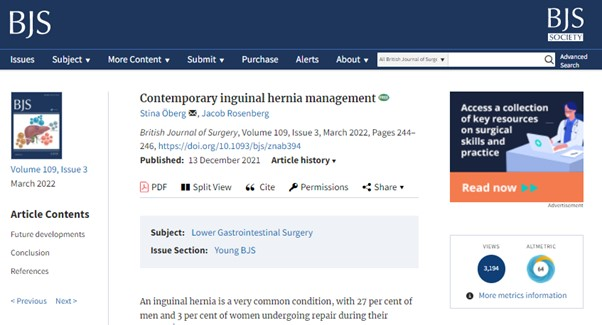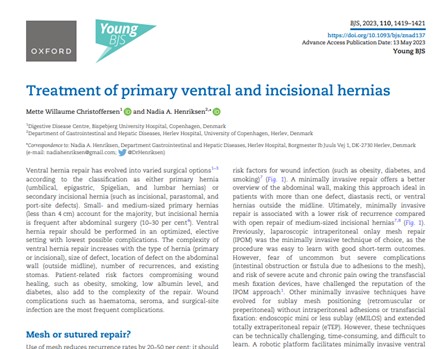BJS Academy>Young BJS>Why I became a herni...
Why I became a hernia surgeon
Andrew de Beaux, MD, MBChB, FRCSEd, FEBS, AWS
NHS Lothian, Scotland,
Oxford University Hospitals, England
Spire Murrayfield Hospital, Scotland
@acdebeaux
4 July 2024
Hernia
Related articles

Contemporary inguinal hernia management
Stina Öberg, Jacob Rosenberg British Journal of Surgery, Volume 109, Issue 3, March 2022, Pages 244–246 Comment: will open hernia die with the passing of the Lichtenstein generation?

Treatment of primary ventral and incisional hernias
Christoffersen MW, Henriksen NA. Br J Surg 2023; 110: 1419–1421. Comment: Mesh for most; specialist care for complex abdominal wall reconstruction.
Copied!
Connect

Copyright © 2026 River Valley Technologies Limited. All rights reserved.








.jpg)



